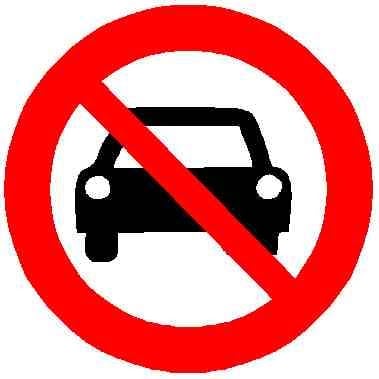… [A]chieving Vision Zero still needs a level of political courage and determination rarely seen in the Bay Area. At rallies, politicians always claim “one life lost is too many,” but then flounder when it’s time to back that up with a serious street intervention or far-reaching regulations. Perhaps the most obscene examples of this were Governor Newsom’s decision to veto Scott Wiener’s speed-governor bill last year, or Supervisor Myrna Melgar’s sabotage of a safety plan in West Portal after a family of four was wiped out by a reckless driver. My fear is that cities will install speed cameras and celebrate the marginal safety improvements, allowing the politicians to declare victory. In reality, speed cameras should be viewed as the least a city can do, not the most.
It’s so crazy to me that the concept of speed cameras is something that is still discussed in the US. Here in Europe we’ve been through this discussion half a century ago, and the consensus is super simple:
- Speed cameras are useful to secure hotspots (e.g. in front of schools)
- Speed cameras are usefuk to get people to change their speed quicker after a speed limit change (e.g. when switching from fast rural to slower urban zones, placing a speed camera at the speed change means that people instantly slow down instead of coasting with high speed through the slower zone)
- Section control cameras (also called average speed cameras) are useful to secure longer stretches, but need to be placed at every entry/exit of such a longer stretch. Perfect for higher level roads, not so great for urban areas. In section control zones, everyone (and I mean everyone) perfectly follows the speed limit, often even driving a little bit under it.
- Architectural changes (speed bumps, planters on the road, …) are helpful, but only in places where you ideally want to have close to no traffic at all (e.g. residential streets), because architectural changes kill traffic throughput.
- Any speed camera solution is much cheaper and quicker to implement than architectural changes, and they are also cheap and easy to move, so they can be implemented as quick-fix solutions until a more permanent architectutal solution is put in place.
- Mobile speed cameras mainly exist to create revenue. There are never nearly enough of them to actually be habit-forming and since they aren’t in a predictable position, they also don’t help with securing hotspots.
Any discussion apart from that either comes from a place of massive ignorance (“We are surely the only place to ever try speed reduction measures”) or from bad faith (“I don’t want to pay fines for speeding so I argue that only expensive and slow to implement architectural changes are acceptable solutions, because they won’t be implemented anyway.”)
Speed cameras are bullshit. Proper road design has more impact on speed than a camera ever will. Stop with this corporate monitoring.
There is no assumption of privacy when operating heavy machinery. You are quite literally wearing an identification tag on the vehicle at all times, such that you can be identified in the case of violating rules.
Speed cameras are good, actually. As mentioned in the article, speeding was reduced by 71% at the installation sites.
So is using design to manage speeds - also mentioned in the article.
Larry Ellison couldn’t have said it better.
Not without enforcement they won’t.
Speed cameras are a form of enforcement - you exceed the speed limit, you get a ticket. Quite literally the definition of enforcement.
How about we install bumps and roundabouts instead at every place where a car is supposed to slow down/stop?
And while we’re at it, also have the same restrictions on how fast a car can go, as on e-bikes?
Architectural solutions only work in places where you ideally don’t want to have any significant amount of traffic in general, because they kill traffic throughput.
If you have an area with high traffic, ideally you want people to drive super consistent 30 or 50km/h.
Speed cameras or section control help with smooth, consistent speed.
Speed bumps and roundabouts cause people to slow down suddenly which kills throughput.
That’s fine in a residential area where you want to get people to instead drive on higher level roads, but it’s really counter-productive on said higher-level roads.
You can’t really use a speed bump on higher speed roads, where speed cameras can be a good choice to enforce speed limits.
Strategic use on roads with a desired speed around 70 km/h around areas with collision risk is a good use-case for speed cameras. This is how they are often deployed in Sweden - you put up a sign warning drivers that a speed is imminent, and compliance with the speed limit becomes essentially universal. A drop in crash risk follows.
Using speed bumps and roundabouts is also obviously good, but they serve different use-cases.

